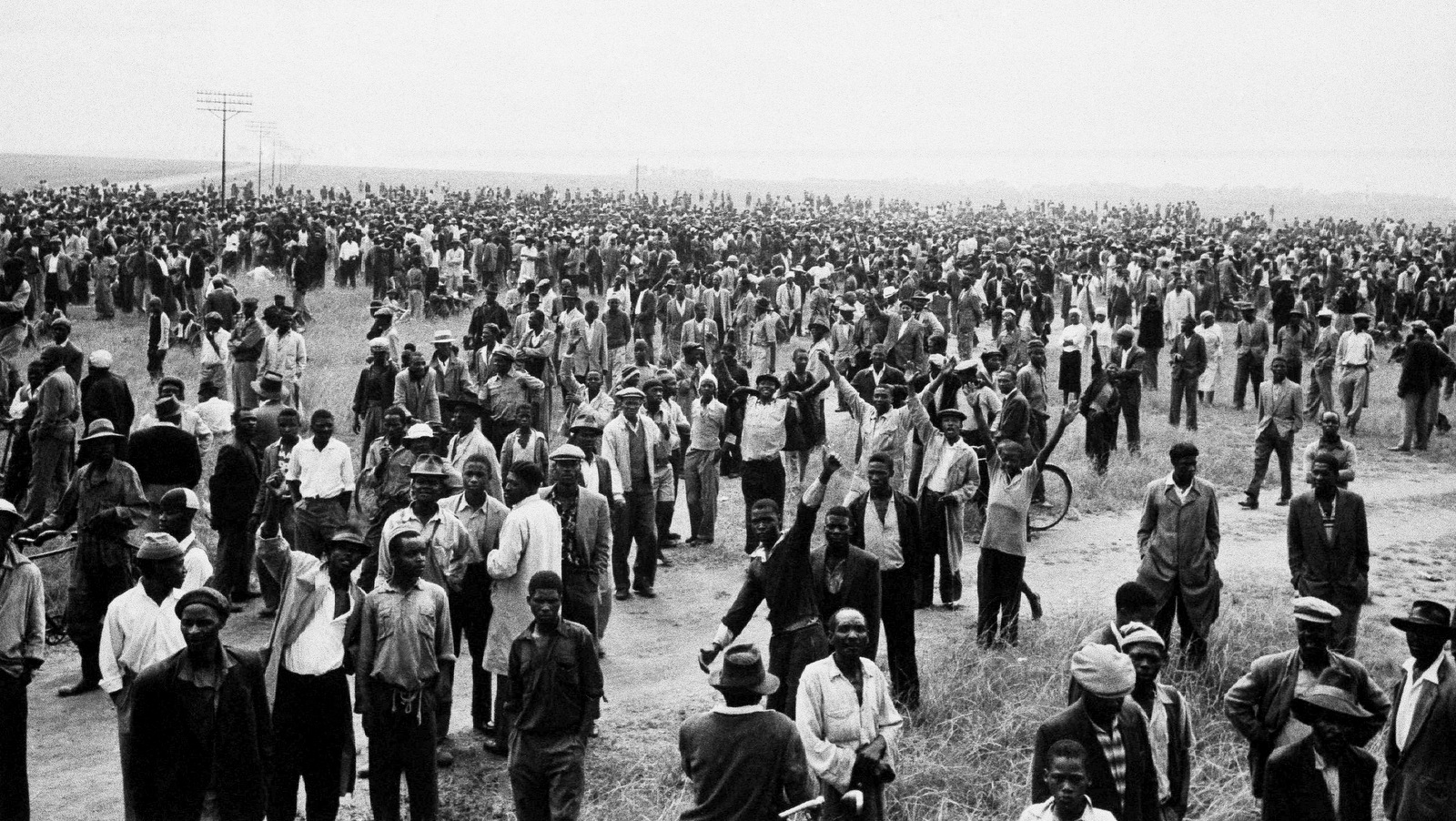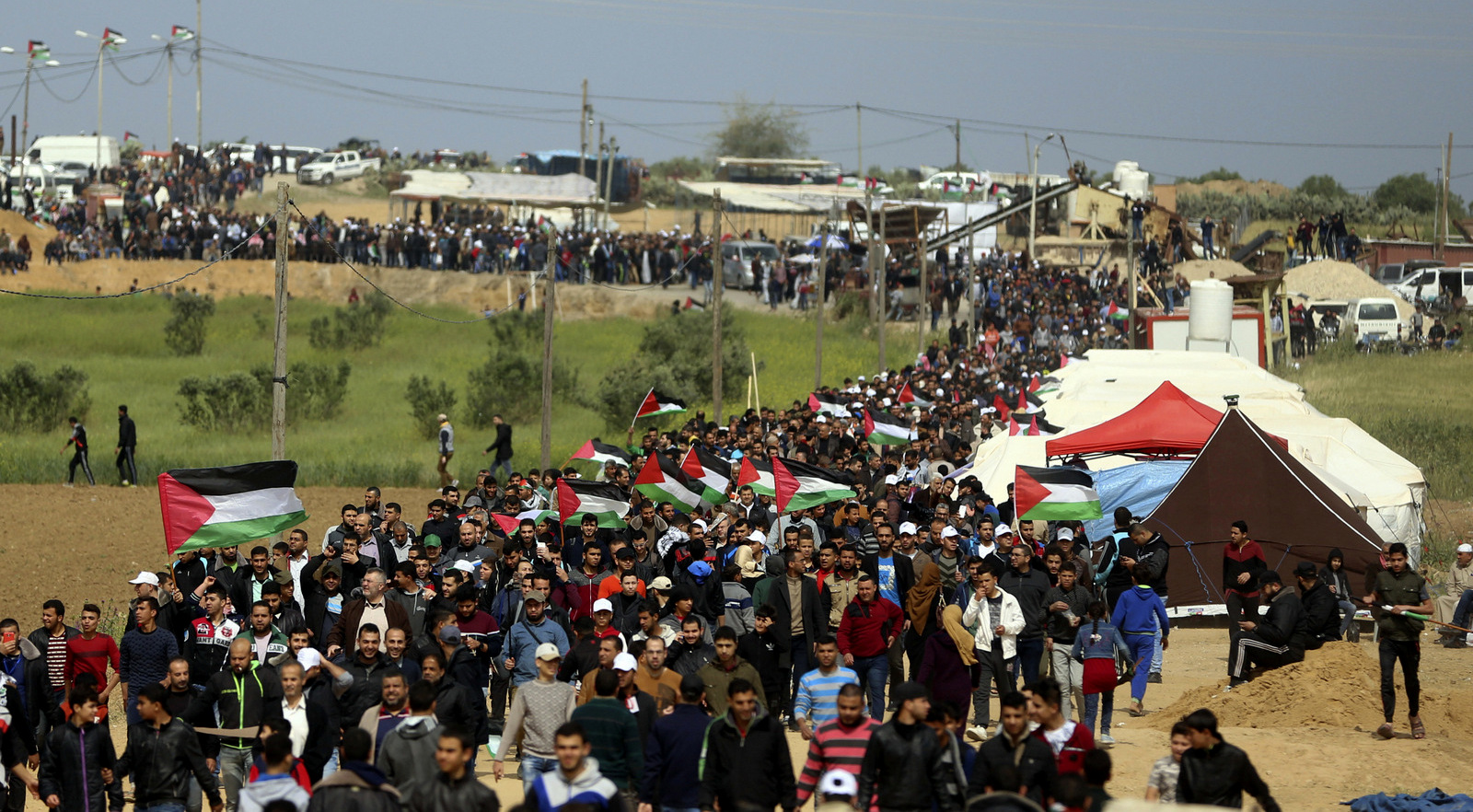Be in absolutely no doubt about the significance of the start of the peaceful Great Return March which began in Gaza on Friday and led to 17 Palestinians being killed and hundreds more wounded by the Israeli army and its snipers. That Israel felt the need to resort to violence in response to unarmed resistance speaks volumes about its innate brutality.
The wanton slaughter represents a turning point, as even the staunchest defenders of the Zionist state are scrambling to find the words to justify what happened when Palestinians mobilised in their thousands to walk towards the homeland stolen from them by what has been called “Jewish terrorism” in 1948.
Israel does not want the world to know that the UN recognised decades ago that the Palestinians have every right under international law to return to their land. On Friday, the Palestinians themselves adopted Gandhi-style peaceful resistance to gather together and make that point clear.
Despite attempts by some pro-Israel lobby groups in Britain to cast the march as a Hamas, and therefore “terrorist”, inspired protest, it was actually a grassroots initiative which had the support of all the Palestinian factions, including Hamas, Fatah, the Popular Front for the Liberation of Palestine (PFLP) and Islamic Jihad. While the protest in Gaza is expected to continue daily until 15 May and the 70th anniversary of the Naqba — the Catastrophe of the creation of Israel — the message is very simple: Palestinians have a legitimate right of return to their pre-1948 homes and land.
However, the response to this demonstration of people power was shocking, even by Israel’s brutal standards; the fourth largest army in the world killed 17 Palestinian civilians and wounded 1,600 others, including 150 children. The so-called “Israel Defence Forces” — a misnomer if ever there was one — was unable to silence the call for the right of return to be implemented. Instead, the IDF has ignited a fire which will rage for another six weeks at least.
This is a PR disaster for Israel. The world’s media gathered in Gaza to witness the start of the peaceful protest. With their long lenses scanning the crowds, photographers were no doubt looking for armed resistance fighters; an image of a Hamas gunman using children as a human shield; or even someone waving a gun. In reality, there wasn’t even a Hamas flag on display; everyone with a Palestinian flag waved it with pride.
On Saturday morning, Australian-born Mark Regev took to the airwaves to try to defend the indefensible. Israel’s ambassador in London spoke about the violence of Hamas, the incitement and threats to Israeli lives which forced the IDF to respond in the way it did. It all sounded very convincing on radio, but the TV news, YouTube and social media images conveyed a very different message. Israel’s propagandist-in-chief was clearly not only bending the truth but had also twisted it beyond breaking point; Regev, in short, insulted the intelligence of those who had the misfortune to listen to him.
Any violence on Friday came from the Israeli side of the border, what the Palestinians call 1948-occupied Palestine. A deadly mix of IDF snipers, soldiers and, yes, armoured vehicles, lay in wait to let rip with their weapons on defenceless, unarmed men, women and children. There has probably been nothing like this in civil rights terms since the notorious Sharpeville massacre in Apartheid South Africa.
On the morning of 21 March 1960, thousands of South Africans gathered in a field not far from the Sharpeville police station to protest against the hated racist pass laws. They sang freedom songs and calling out “Izwe lethu” (Our land); “Awaphele amapasti” (Down with passes); “Sobukwe Sikhokhele” (Lead us [political dissident Robert] Sobukwe); and “Forward to Independence, Tomorrow the United States of Africa”.

When they reached the police station, a small scuffle began near the entrance. A policeman was pushed over — accidently, protesters insisted — and the 5000-strong crowd began to move forward to see what was happening. Without warning, 300 armed police officers opened fire with live ammunition for approximately two minutes. According to the official inquest, 69 people were killed and 180 were seriously wounded.
Adopting what can now be called “the Regev position” defending Apartheid Israel, the South African Apartheid police claimed that they were in desperate danger because the crowd was stoning them. Yet only three policemen were reported to have been hit by stones, while more than 200 South African civilians were shot down in cold blood. The police also claimed that the crowd was armed with “ferocious weapons” which, it was alleged, littered the compound after they fled. There were no weapons. Within hours — long before the internet and social media, remember — the name of Sharpeville and the massacre had flashed around the world and the police lies were exposed, just as Regev’s lies were exposed this weekend.
Bloody Friday in Gaza was the Palestinians’ own Sharpeville massacre at the hands of their own Apartheid oppressors, and the next six weeks could prove to be a turning point for the 70-year-long injustice inflicted upon them. The world looked on as Israel unleashed its high-tech weaponry upon peaceful protesters. The UN Secretary General and various human rights organisations have expressed their outrage, rightfully so, as has the influential US-based Jewish Voices for Peace.
The Sharpeville parallel has now prompted human rights and Palestine solidarity groups, including the Boycott, Divestment and Sanctions (BDS) campaign, in South Africa, to tell their government to implement without delay the ruling ANC’s resolution calling for the “immediate and unconditional downgrade of the SA embassy in Israel to a liaison office”. Similar groups around the world are calling on Israel to be held to account for its murderously disproportionate response to a peaceful demonstration.
Among those killed on Friday was artist Mohamed Abu Nmr, aged 26, who 24 hours earlier had created a sand sculpture on Gaza’s beach reading, “I am returning”. The young artist’s act of heroic resistance will not be forgotten but it must be remembered that he did not die fighting. He was not carrying weapons. There was no confrontation or clash. He was gunned down without warning because he dared to take part in a peaceful protest to tell his oppressors that he wanted his land back.
All Palestinians have the law on their side; the right of return is an individual right afforded to every single one of them, and it cannot be negotiated away by third parties, no matter who they might be. They also have the legitimate right to resist Israel’s brutal military occupation, and once the mourning period is over they will be back to their protest more determined than ever. Israel has crossed a red line with its murderous contempt for international and humanitarian laws; like Apartheid South Africa and Sharpeville, Israeli violations against unarmed Palestinians are starting to stack up and tip the balance towards the state’s inevitable day of reckoning. If there’s one thing that Israel and its “Defence Forces” cannot handle, it is peaceful resistance.
Motivated by the cruelty and violent repression that led to the Sharpeville massacre, the UN General Assembly proclaimed in 1965 that 21 March would henceforth be the International Day of the Elimination of Racial Discrimination. Three years later, the UN promoted the creation of the International Convention on the Elimination of All Forms of Racial Discrimination (ICERD), which is monitored by the UN Committee on the Elimination of Racial Discrimination (CERD). This body also serves as an individual complaints mechanism, effectively making it enforceable against its member states.
What happened in Gaza on Friday was a turning point; Bloody Friday should be recognised as the day that Israel committed one massacre too many. Its murderous intent was trailed in advance by IDF spokespeople and media mouthpieces, and its brutality was witnessed by the assembled media and everyone with a smart phone. Mark Regev’s claim that Israel was forced to defend itself by firing off thousands of live rounds into an unarmed crowd of men, women and children exposes him as a man bereft of a moral compass; very much, it must be said, like the regime that he is paid to get off the hook. The slaughter in Sharpeville led eventually to the fall of Apartheid South Africa. Palestine’s own Sharpeville massacre by its own oppressors is yet another crack in the Wall of Israeli Apartheid. All the Regevs in the world cannot paper over the cracks any longer. He knows it; Israel knows it; the world knows it. Now is the time to admit it.
Top Photo | Palestinians attend a demonstration near the Gaza Strip border with Israel in eastern Gaza City, Friday, March 30, 2018. (AP/ Khalil Hamra)
Yvonne Ridley provides political analysis on affairs related to the Middle East, Asia and the Global War on Terror. Her work has appeared in numerous publications around the world from East to West from titles as diverse as The Washington Post to the Tehran Times and the Tripoli Post earning recognition and awards in the USA and UK. Ten years working for major titles on Fleet Street she expanded her brief into the electronic and broadcast media producing a number of documentary films on Palestinian and other international issues from Guantanamo to Libya and the Arab Spring.
![]() Middle East Monitor is licensed under a Creative Commons Attribution-NonCommercial-ShareAlike 4.0 International License.
Middle East Monitor is licensed under a Creative Commons Attribution-NonCommercial-ShareAlike 4.0 International License.


